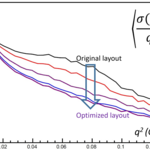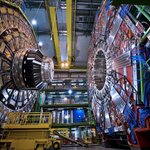Physics

In the final day of the ICNFP 2022 conference in Kolympari (Greece), we could listen to an enlightening presentation by Prof. Marek Karliner (Tel Aviv University), who is an absolute authority on the matter of the theory of hadron spectroscopy. Below is a unrefined transcript of his presentation, wherein I hope I did not include too many typing mistakes (typically omissions, as my speed at the keyboard is not as good as it used to be). As a warning, the text is quite technical and not suitable for non-physicists. The gist of it, if you are curious but can't delve into it, is that we are…

A reader of this blog left an interesting question in the comments thread of the article I wrote on recent ATLAS results two days ago. As I tried to answer the question exhaustively, I think the material might be of interest of other readers here, so I decided to make an independent post of it, adding some more detail.
John asks whether it is possible that what we see, when we plot the mass of a particle, is the true distribution of values of the particle - i.e. that the particle does not have only one mass, but a distribution of values. The question is not an idle one! So let us discuss it…

Bill Murray gave a nice summary of recent results from the ATLAS collaboration at the ICNFP conference this morning, and I will nit-pick a few graphs from his presentation to show the level of detail of investigations in subnuclear processes that the Large Hadron Collider (LHC) is providing these days, as seen from the lens of one of its two main microscopes, the wondrous ATLAS detector.The LHC is taking data. What, again?
As Run 3 of the LHC has recently started, maybe I should explain how we do business in particle collisions at CERN first and foremost. When the LHC was first turned on 12…

I arrived to Kolymbari, a nice seaside resort on the western coast of the Greek island of Crete, late yesterday night, and am now already immersed in the morning session of the XI edition of the International Conference on New Frontiers in Physics. This event, which takes place at the Orthodox Academy of Crete in Kolymbari since 2012, takes a rather broad view on advances in both experimental results and theory of fundamental physics.Maybe because of the nice seaside location, or because of the warm and constantly sunny weather this time of the year, the event is quite laid back and this…

Not all that much to do with Hank’s recent blog about the Galileo document that isn’t, but a note about how Einstein could be somewhat “pig-headed”, similar misunderstandings and new developments in contemporary fundamental physics.
Anton Petrov has been doing a bit of debunking lately. Recently, people have been spreading the idea that the James Web Space Telescope has somehow “disproved” the Big Bang Theory. This was kicked off by the title of recent paper [2207.09428] Panic! At the Disks: First Rest-frame Optical Observations of Galaxy Structure at $z > 3$ with JWST in the…

To most physicists, time is a relative construct. A clock changes position in three real dimensions, the earth rotates. If the effects in the real world change, like gravity, so does the perception of time. That does not make time a 'fourth' dimension outside stories.
Yet a few theoretical physicists argue that because time does march on, it is like an arrow. This 'arrow of time' would move into the future, and to bolster their idea they invoke the second law of thermodynamics: the principle that microscopic arrangements of physical systems tend to increase in randomness, moving from order to…

Today I am back from one of the most interesting workshops I ever attended to, and I wish to share some thoughts I had on possible ways to enhance our research of new ideas for future particle detectors with you. Those ideas come from discussions with other participants to the workshop, or just from re-digesting things I have been pondering over for a while.
More than specific good leads for new research, the thoughts I share below indicate a diagonal way of thinking at our design problems, so I do not fear of getting scooped if I share them here. Besides, any one of the topics below…

To appreciate what B mesons are, and what is the magic of their behaviour, which is the topic of this article, I need to give you a three-paragraph introduction below.
At the smallest distance scales, matter is made of quarks and leptons, which we consider as point-like objects endowed with different properties and interactions. Most of the matter around us is in fact made up of three-quark systems: protons and neutrons, organized in tightly packed nuclei kept together by the strong force; with electrons (which are the lightest charged leptons) orbiting around them thanks to the…

Physicists from the CMS experiment at CERN's Large Hadron Collider have used the total data sample of 13 TeV proton-proton collisions collected in the past few years to search for resonant decays of heavy hadrons into pairs of J/Psi mesons, and they found three of them. One of the three new resonances is likely to be the same as a particle already identified for the first time by the competitor LHCb experiment, while the other two are new finds. LHCb is also a LHC detector, but it is one optimized for heavy hadron spectroscopy; while CMS is a "general purpose" detector built with the…

Yes, I know - I have touched on this topic already a couple of times in this blog, so you have the right to be bored and surf away. I am bound to talk about this now and then anyway, though, because this is the focus of my research these days. Recently I was in the Elba island (a wonderful place) for a conference on advanced detectors for fundamental physics, and I presented a poster there on the topic of artificial-intelligence-assistend design of instruments for fundamental physics. Below is the poster (I hope it's readable in this compressed version - if you really want a better pic…